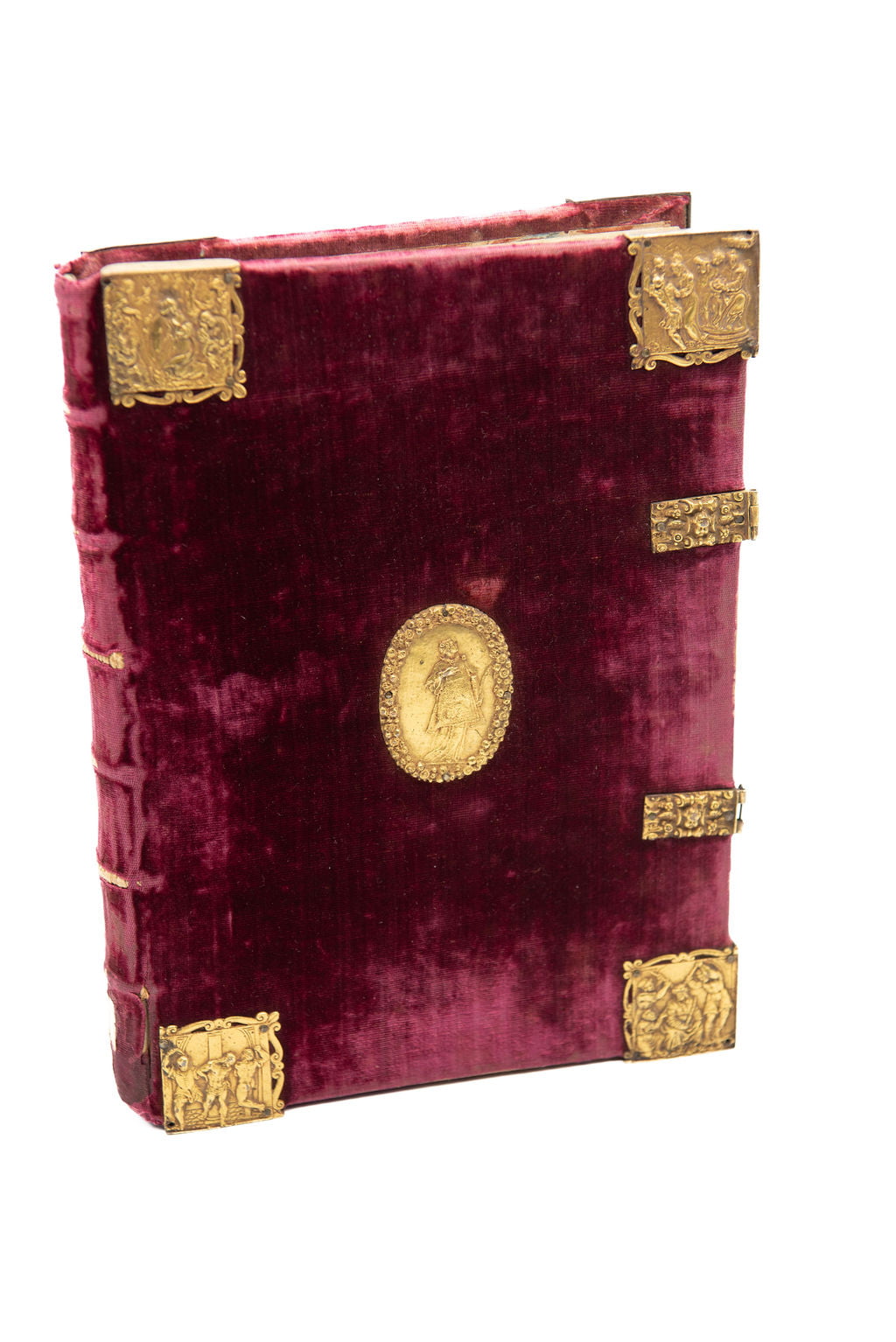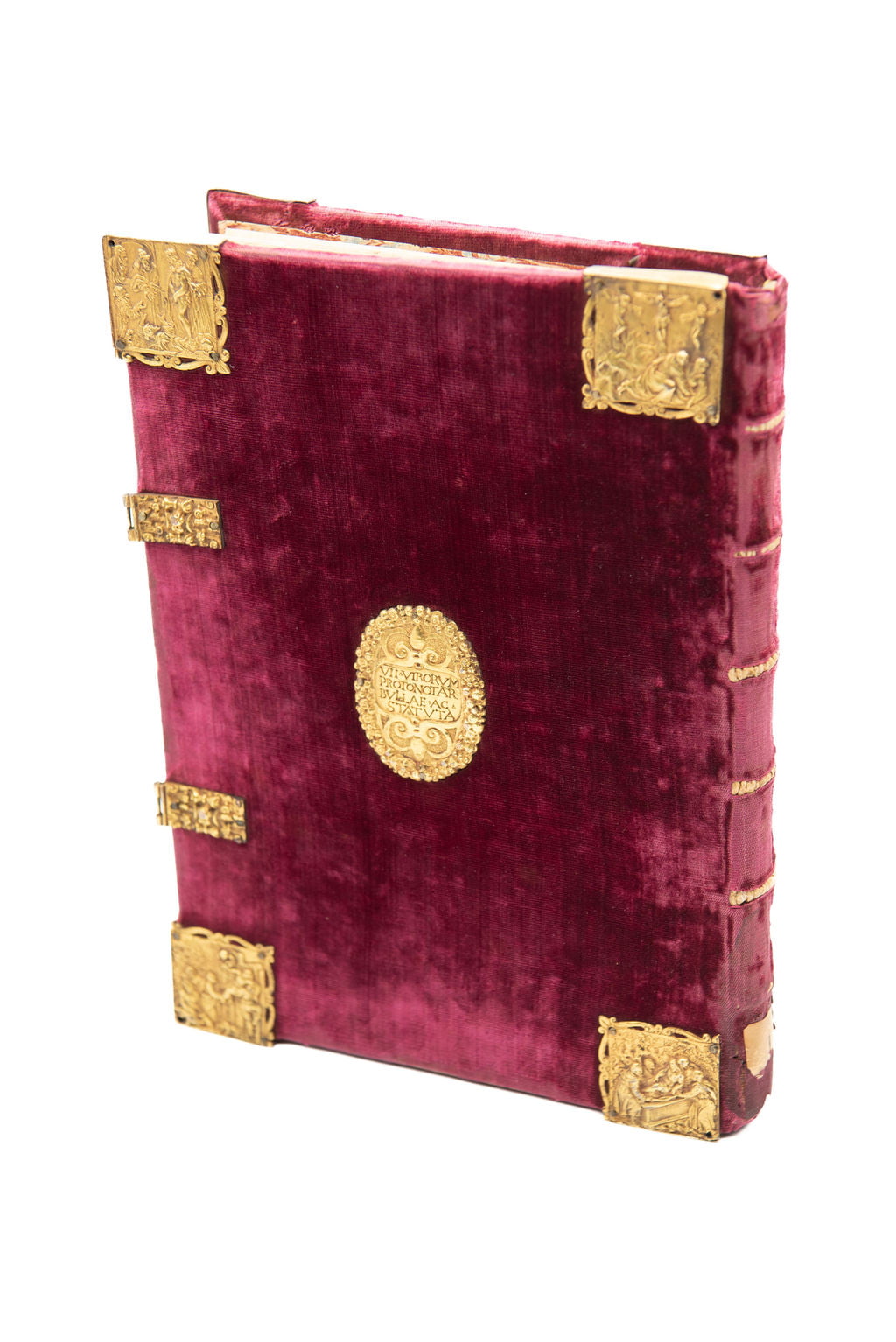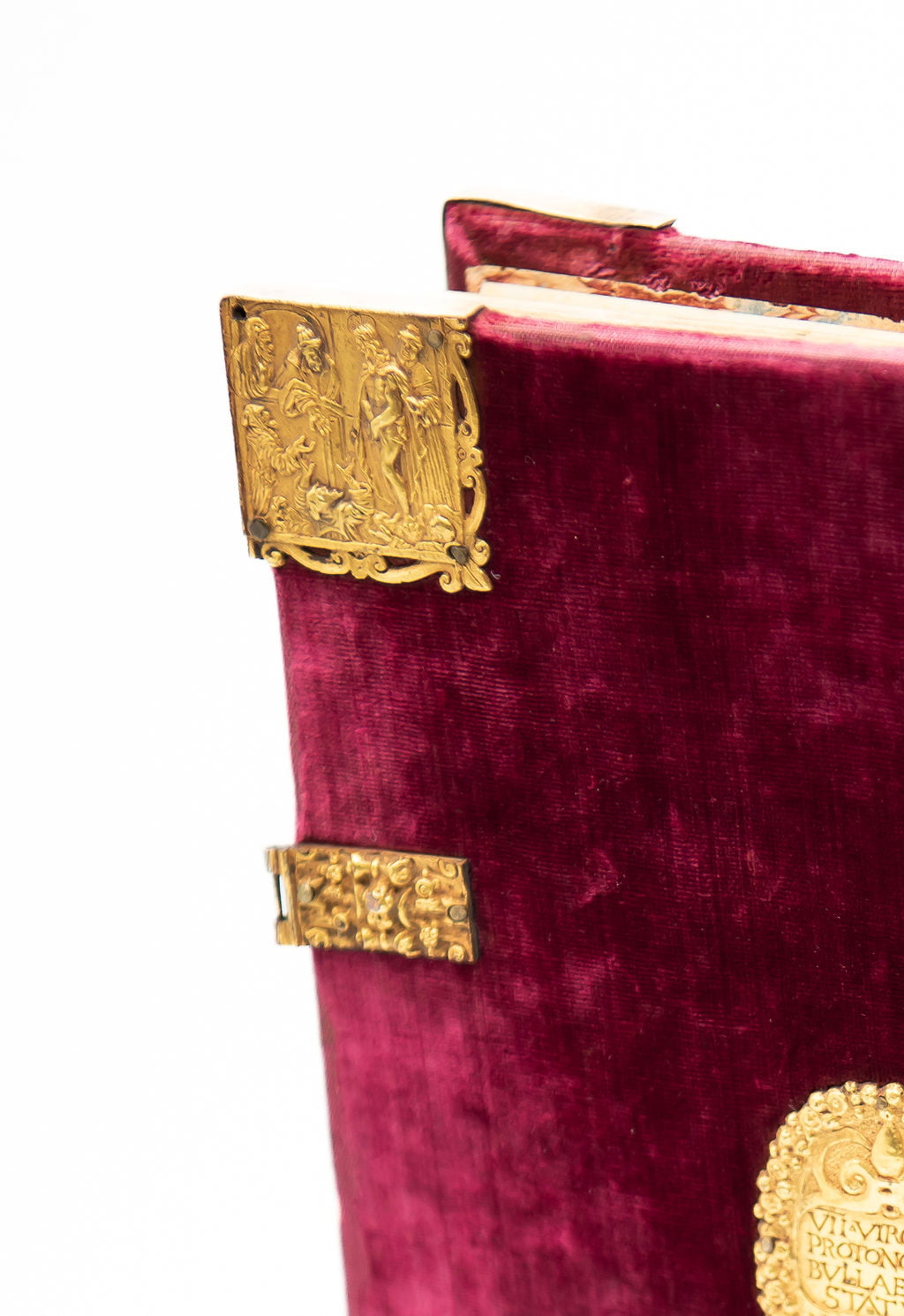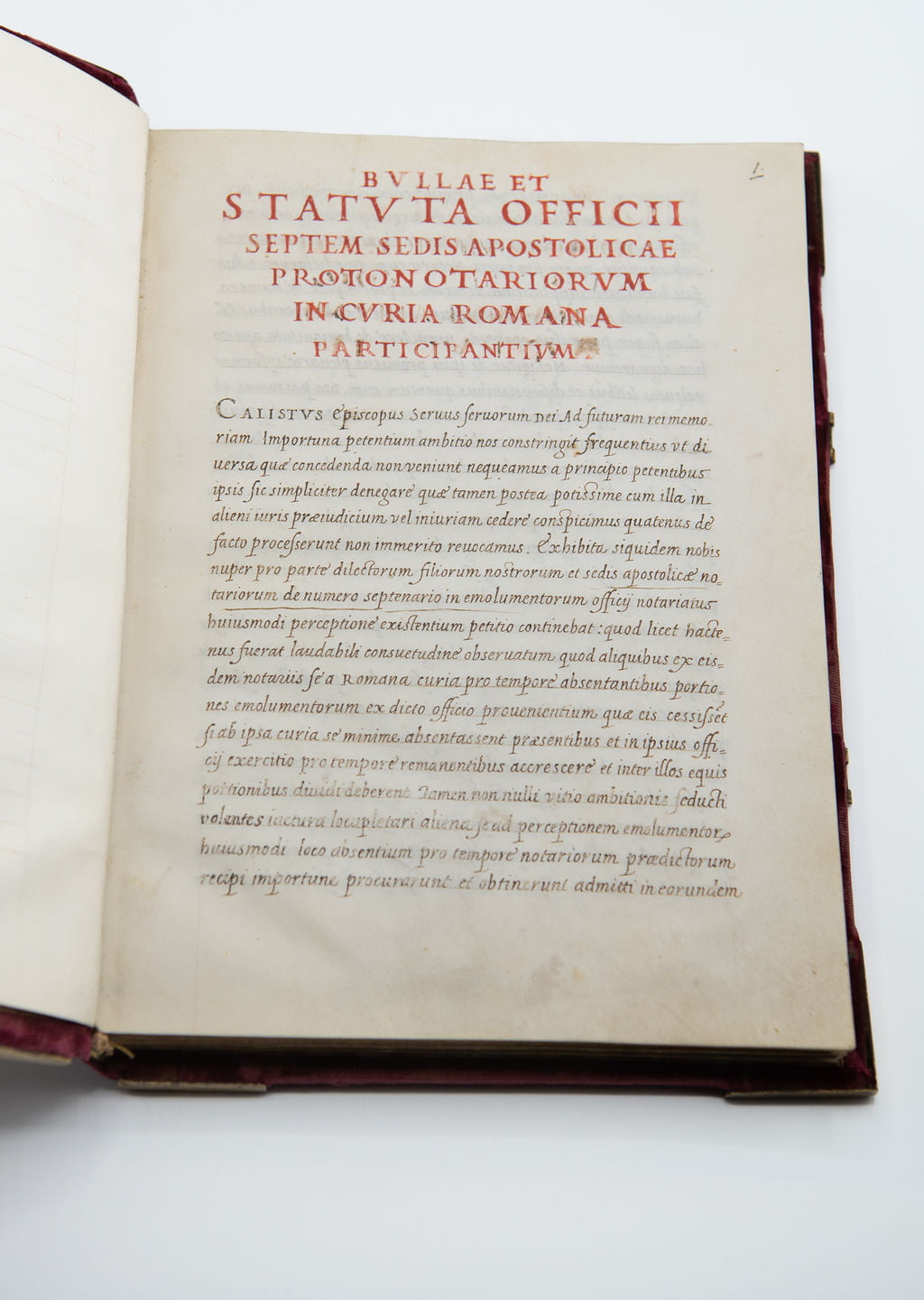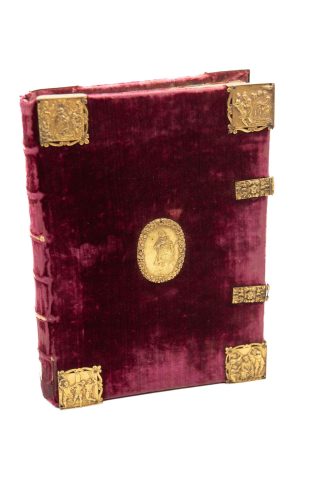CATHOLIC CHURCH, CURIA
A RENAISSANCE TREASURE STYLE BINDING
Bullae et statuta officii septem sedis apostolicae protonotariorum in Curia Romana participandum
Rome, not before 1556, 1621-1661 and 1825£49,500.00
Manuscript on Vellum. Large 4to. pages 191/2cm x 27cm; 4 ruled and blank ll., 69 numbered pages of text, further 45 ll ruled and blank. Pp. 1-43 in elegant brown C16th cancellaresca formata, headings in red., 43-56 in C17th humanistic hand with separated letters, p. 57-64 in more ornate vernacular variant, last in C19 copperplate, on uniform high quality vellum. In a stunning unrestored Roman binding, probably last quarter of the C16 in purple velvet over wooden boards, 8 large rectangular gilt metal cornerpieces depicting scenes from the life of Christ, large central gilt oval on upper cover depicting a protonotary vested formally with quill and book within carved and chiselled floral surround, oval with similar border on lower ‘VII VIRORUM PROTONOTAR. BULLAE AC. STATUTA’ inscribed on central ornamental panel. Four richly carved gilt metal clasps, one loosening, catches lacking, velvet worn on spine and edges.
An exceptional ms. copy of the papal bulls and statutes setting out the duties powers and privileges of the Apostolic Protonotaries of the Roman Church from the 1560’s until the early C19th. This was the, or an official copy used either by the Protonotarial office or by one of their number, perhaps the figure depicted in the gilt oval on the upper cover. The papal Bulls forming and reforming the office from Callistus to Adrian VI occupy the first 21 pages, the relevant statutes pp. 23-43 and further Bulls of Urban VIII and Alexander VII from pp 43-59. Pp. 60-64 comprise the agreement of the protonotaries drafted 21st September 1661 concerning the division of their emoluments, signed by each of them and formally attested by the Curial pro-secretary Giovani Manfroni and the final pages the reforms of Gregory XVI.
The Protonotaries Apostolic were members of the highest college of prelates of the Roman Curia, deriving their office from the seven regional notaries of Rome in late antiquity, and the senior lawyer-administrators of the C16 Catholic church charged with the issue of Papal Bulls and other legislative or quasi legislative Papal documents. On the further development of Papal administration , secular and religious, they remained the supreme palace notaries of the Papal Chancery and in the middle ages were very high ranking officials. Sixtus V increased their number to 12, though ‘honories’ were also appointed, Gregory XVI re-established the college of real protonotaries with seven members in 1838. The pronotarial office is of particular interest as at the same time the precursor of the modern state bureaucracy and a functional link with the ancient world.
This remarkably beautiful almost ‘treasure’ binding is an extremely scarce survivor of a binding style typical of de luxe presentation copies from the mid C15 to mid C17 centuries . Unfortunately plush velvet is not a durable material and gilt ornaments tended to part company with their binding at the first opportunity. It is of the utmost rarity to find one on the market intact with all its ornaments in place. The eight cornerpieces (approximately 4 x 41/2” including frame) recount sequentially the events of the Passion from the Garden of Gethsemane to Burial in the Tomb. The representations are life like, the action vivid and the relief and general condition is excellent. They were probably made for and are certainly contemporary with the binding. They are almost certainly Roman (cf Rossi Placchette 65 -151 and may derive from the frescos of Sebastiano del Piombo in the church of San Pietro in Montorio in Rome, at least one of which according to Vasari is according to designs given him by Michelangelo. The four clasps are likely to form part of the same set.
The two central ornaments are somewhat lighter in style and of sharper execution on finer metal, the work of a gem carver or expert goldsmith. The designer was clearly influenced by Renaissance Mannerism but the approach of the baroque is sensible. The upper cover figure may well be modelled on a monumental sculpture of the period whilst the lower suggests a copy of a sculptural stemma, perhaps from the wall of the Protonotarial office itself. The feeling for the monumental and architectural combined with a fineness of detail points towards the body of work generally attributed to Guglielmo de la Porta 1490-1577. There is stylistic similarity too betwenn the cornerpieces and certain of De la Porta’s known work eg. the silver plaque of the flagellation now in the Los Angeles County Museum of Art. Interestingly De La Porta also worked under the influence of Michelangelo and his workshop specialised in the manufacture of bronzes of contemporary art.
In stock


